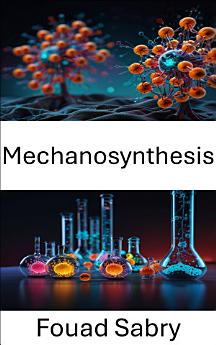Mechanosynthesis: Advancing Precision and Control at the Molecular Level
About this ebook
Chapters Brief Overview:
1: Mechanosynthesis: Introduces the concept of mechanosynthesis, laying the foundation for its potential in nanotechnology.
2: James Gimzewski: Highlights the contributions of James Gimzewski, a key figure in the field of molecular nanotechnology.
3: Nanomedicine: Explores the intersection of nanotechnology and medicine, showing how mechanosynthesis can lead to groundbreaking medical innovations.
4: Nanotechnology: Provides a broad overview of nanotechnology, placing mechanosynthesis in the context of broader advancements in the field.
5: Productive nanosystems: Discusses the role of nanosystems in production, illustrating their potential to create complex structures at the molecular level.
6: Molecular biophysics: Connects the principles of biophysics with nanotechnology, explaining how molecular interactions drive the efficiency of mechanosynthesis.
7: Probe tip: Explains the significance of probe tips in the process of mechanosynthesis, offering practical insight into their application.
8: Nanoabacus: Introduces the concept of the nanoabacus, exploring its potential as a computational tool in the world of nanotechnology.
9: Molecular nanotechnology: A deeper dive into molecular nanotechnology, discussing its future potential and the role of mechanosynthesis in shaping it.
10: Center for Chemistry at the SpaceTime Limit: Explores cuttingedge research at the center, bridging chemistry and nanotechnology to push the boundaries of science.
11: Robert Freitas: Highlights the work of Robert Freitas, a key figure in the development of molecular nanotechnology, and his contributions to mechanosynthesis.
12: Molecular scale electronics: Explains how mechanosynthesis can lead to the development of molecularscale electronics, an area critical for future technological advancements.
13: History of nanotechnology: Provides a historical context for the development of nanotechnology, showing how mechanosynthesis fits into its evolution.
14: Selfreplicating machine: Examines the concept of selfreplicating machines, a critical application of mechanosynthesis in advanced robotics.
15: Electronic quantum holography: Explores the integration of quantum holography with nanotechnology, highlighting its potential for creating novel materials and devices.
16: K. Eric Drexler: Focuses on the visionary work of K. Eric Drexler, a pioneering figure in molecular nanotechnology and mechanosynthesis.
17: Don Eigler: Explores Don Eigler’s contributions to nanotechnology, particularly his role in the development of molecular assemblers.
18: Molecular assembler: Delves into the concept of molecular assemblers, key to the process of mechanosynthesis and the creation of complex structures.
19: Artificial lattice: Discusses the use of artificial lattices in nanotechnology, illustrating their role in organizing molecules for efficient mechanosynthesis.
20: Drexler–Smalley debate on molecular nanotechnology: Examines the historic debate between Drexler and Smalley, offering insight into the scientific discourse surrounding nanotechnology.
21: Selfassembled monolayer: Introduces the concept of selfassembled monolayers, which are crucial in the field of nanotechnology for creating organized structures.










